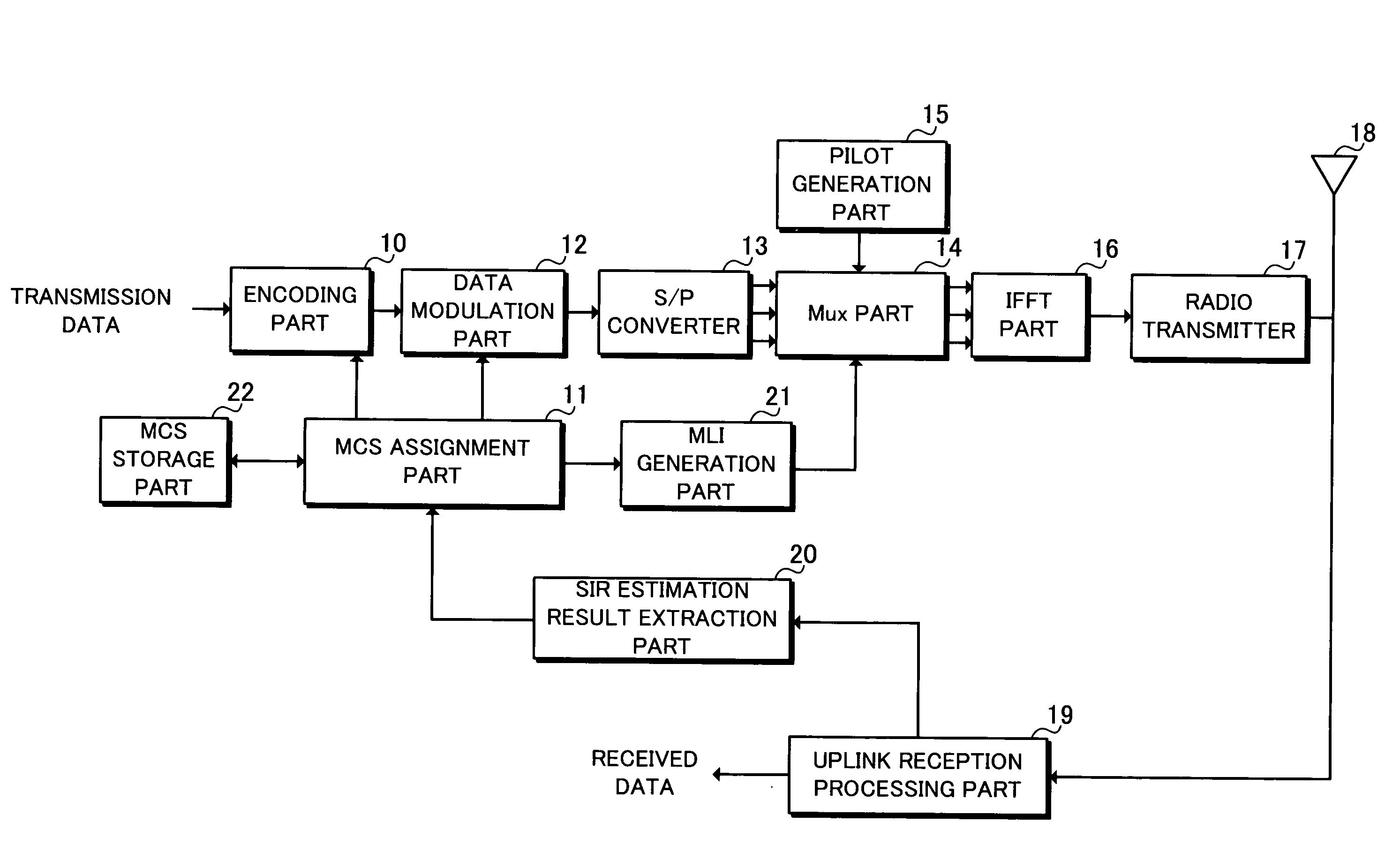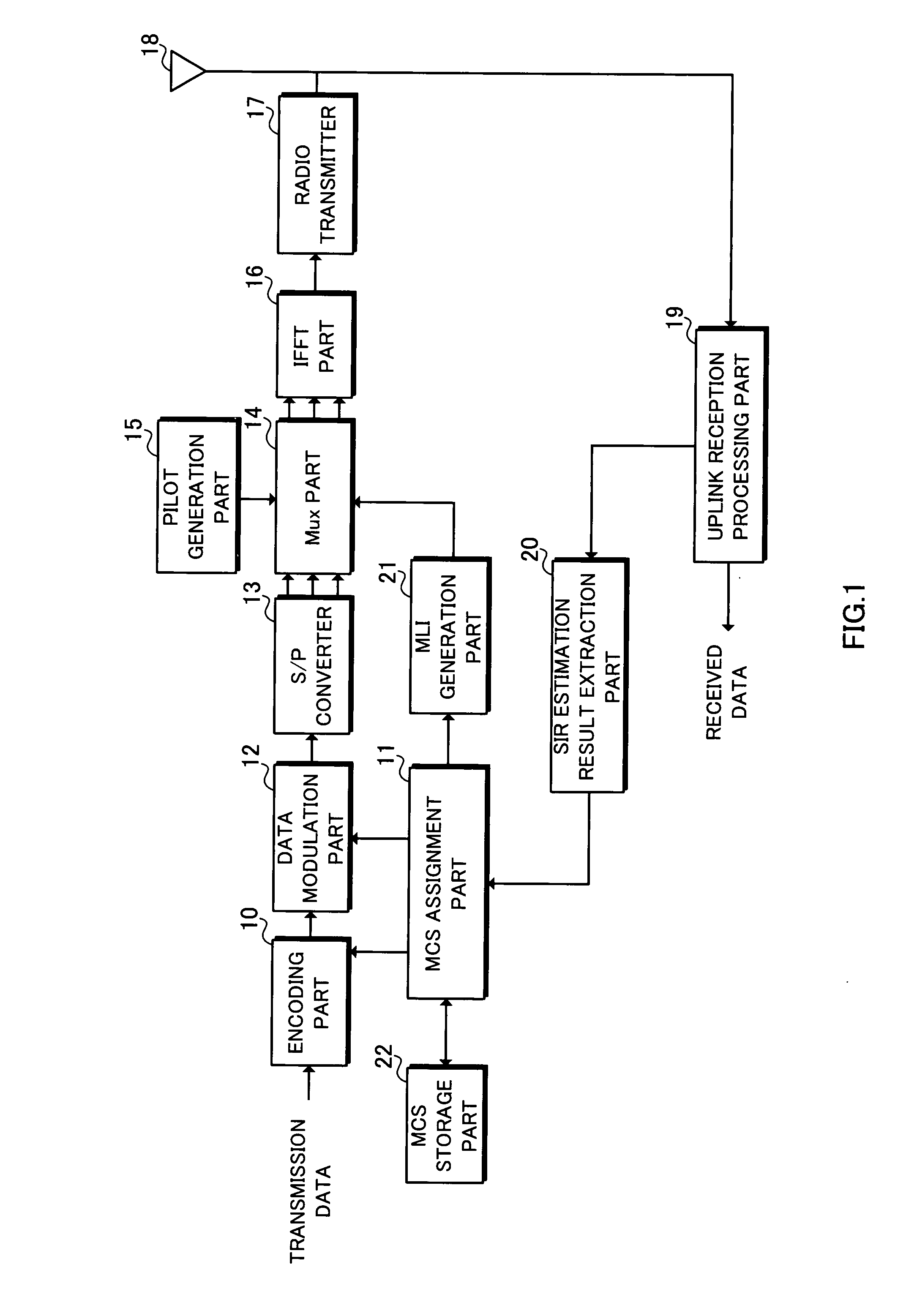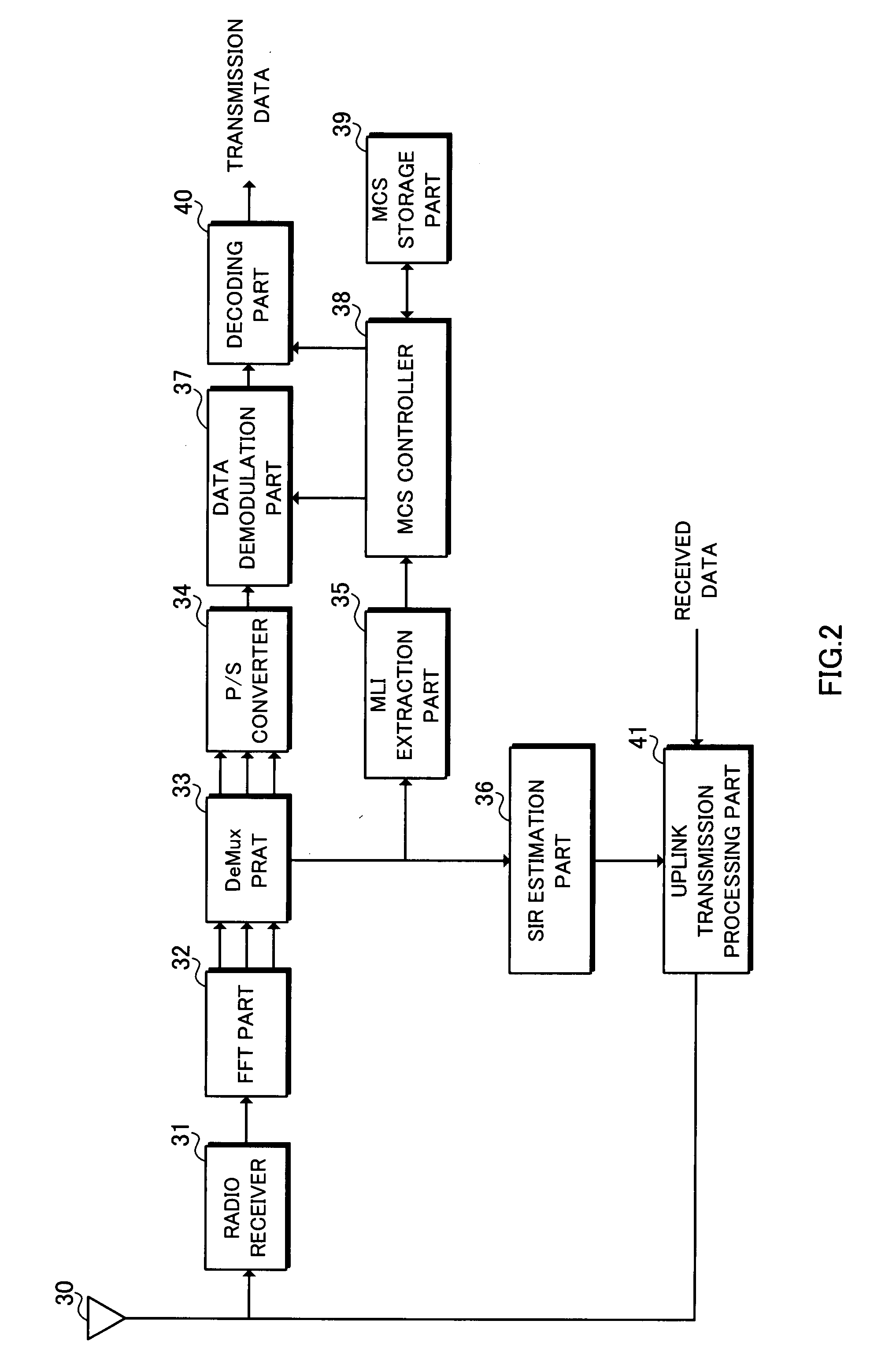Wireless Transmitter and Wireless Receiver
- Summary
- Abstract
- Description
- Claims
- Application Information
AI Technical Summary
Benefits of technology
Problems solved by technology
Method used
Image
Examples
first embodiment
[0065]In a first embodiment, the above difference information generated with one bit means raising or lowering the MCS level. If the difference information is one, for example, the MCS level is raised by one level. If, on the other hand, the difference information is zero, the MCS level is lowered by one level. The base station compares the received SIR from the mobile station with a threshold of the previous MCS level. If the received SIR is larger than the threshold, the base station raises the MCS level, and if the received SIR is smaller than the threshold, the base station lowers the MCS level to transmit difference information indicating the raised / lowered MCS level to the mobile station. Based on the difference information, the mobile station determines whether to raise or lower the MCS level.
[0066]FIG. 1 is a block diagram showing a schematic configuration of a base station according to the first embodiment. Transmission data is input into an encoding part 10 to be encoded a...
second embodiment
[0086]In a second embodiment, difference information created with one bit means changing from the previous MCS level or not changing from the previous MCS level. For example, if the difference information is one, the MCS level is raised by one level. If, on the other hand, the difference information is zero, the MCS level remains unchanged. A base station compares a received SIR from a mobile station with a threshold of a previous MCS level and that of the MCS level one level above the previous MCS level. If the received SIR is smaller than the previous MCS level, the MCS level is lowered and, if the received SIR is larger than the threshold of the MCS level one level above the previous MCS level, the MCS level is raised. If the received SIR is between both thresholds, the MCS level is retained unchanged at the previous MCS level and difference information is transmitted. The mobile station, on the other hand, determines the MCS level based on the difference information, current rec...
third embodiment
[0098]In a third embodiment, like the second embodiment, difference information generated with one bit means changing from the previous MCS level or not changing from the previous MCS level. For example, if the difference information is one, the MCS level is raised by one level. If, on the other hand, the difference information is zero, the MCS level remains unchanged. A base station compares a received SIR from a mobile station with a threshold of a previous MCS level and that of the MCS level one level above the previous MCS level. If the received SIR is smaller than the previous MCS level, the MCS level is lowered and, if the received SIR is larger than the threshold of the MCS level one level above the previous MCS level, the MCS level is raised. If the received SIR is between both thresholds, the MCS level is retained unchanged at the previous MCS level and difference information is transmitted. The mobile station, on the other hand, determines the MCS level based on the differ...
PUM
 Login to View More
Login to View More Abstract
Description
Claims
Application Information
 Login to View More
Login to View More - R&D
- Intellectual Property
- Life Sciences
- Materials
- Tech Scout
- Unparalleled Data Quality
- Higher Quality Content
- 60% Fewer Hallucinations
Browse by: Latest US Patents, China's latest patents, Technical Efficacy Thesaurus, Application Domain, Technology Topic, Popular Technical Reports.
© 2025 PatSnap. All rights reserved.Legal|Privacy policy|Modern Slavery Act Transparency Statement|Sitemap|About US| Contact US: help@patsnap.com



